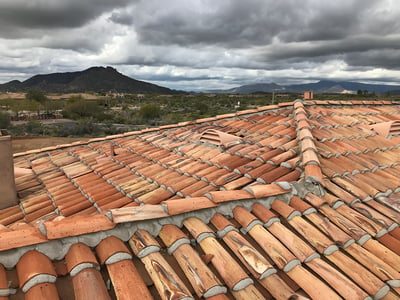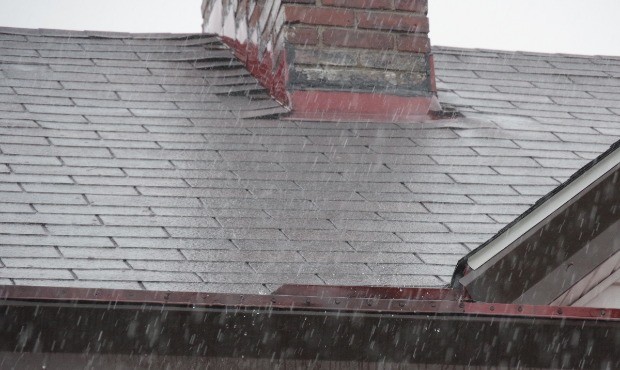How to Prepare Your Roof for Monsoon Season in Arizona
Monsoon season in Arizona brings intense storms that can wreak havoc on roofs. Preparing your roof beforehand can prevent costly damage and ensure your home remains safe and dry. Here are essential tips to get your roof monsoon-ready:
Inspect for Damage
Before monsoon season starts, conduct a thorough inspection of your roof. Look for missing or damaged shingles, cracks in the flashing, and signs of wear and tear. Pay special attention to areas around chimneys, vents, and skylights where leaks are more likely to occur. Address any issues promptly to prevent water from seeping into your home during heavy rains.
Regular inspections are crucial for identifying and addressing potential issues before they escalate into more significant problems. Check the condition of roofing materials, including asphalt shingles, tiles, or metal panels, to ensure they are intact and securely fastened. Look for signs of deterioration such as curling or cracked shingles, which can compromise the roof’s ability to withstand monsoon weather.

Clean Gutters and Downspouts
Clogged gutters and downspouts can cause water to overflow onto your roof, leading to leaks and water damage. Clean out debris such as leaves, twigs, and sediment from gutters and ensure downspouts are clear to allow proper drainage away from your home’s foundation. Consider installing gutter guards to prevent debris buildup and make regular maintenance easier.
Inspect gutters and downspouts for any signs of damage or rust that could impede water flow. Ensure that gutters are securely attached to the roofline and that downspouts extend several feet away from the foundation to prevent water from pooling near your home. Proper drainage is essential for protecting your roof and foundation from water damage during monsoon season.
Check Roof Seals and Caulking
Inspect the seals around vents, chimneys, skylights, and other roof penetrations. Check for cracks or gaps and reseal with appropriate caulking or roofing cement as needed. Proper sealing prevents water intrusion and helps maintain the integrity of your roof during monsoon storms. Pay attention to any areas where previous caulking may have deteriorated due to sun exposure or age.
Inspect flashing around chimneys and vents for signs of damage or deterioration. Replace any cracked or corroded flashing to ensure a watertight seal and prevent leaks during heavy rain. Consider applying a waterproof sealant to vulnerable areas such as valleys and joints to provide added protection against water penetration.

Trim Overhanging Branches
Overhanging tree branches can pose a risk to your roof during monsoon storms. Trim back branches that are close to or touching your roof to prevent them from causing damage or becoming projectiles in strong winds. This proactive measure not only protects your roof but also reduces the likelihood of branches damaging other parts of your property during storms.
Inspect nearby trees for signs of disease or weakness that could make them more susceptible to wind damage during monsoon season. Consider pruning trees regularly to maintain a safe distance from your roof and minimize the risk of falling branches. Proper tree maintenance helps protect your home and roof from potential hazards during severe weather events.
Secure Loose Materials
Ensure that all roof materials, such as flashing, shingles, and tiles, are securely fastened. Loose materials can be lifted or torn off by strong winds, exposing your roof to water damage. Inspect for any loose or damaged components and replace or repair them promptly to fortify your roof against monsoon conditions.
Check the condition of roofing fasteners such as nails and screws to ensure they are tightly secured. Replace any missing or rusted fasteners to prevent shingles or tiles from becoming dislodged during high winds. Consider reinforcing vulnerable areas such as roof edges and ridges with additional fasteners or roofing adhesive for added stability.
Install Hurricane Straps
If your roof is not already equipped with hurricane straps or clips, consider installing them. These metal straps help secure the roof structure to the walls of your home, providing extra reinforcement against high winds and reducing the risk of roof uplift during monsoons. Hurricane straps are especially beneficial for homes in areas prone to severe weather events.
Consult with a licensed roofing contractor to determine the appropriate type and placement of hurricane straps for your roof. Ensure that straps are installed according to manufacturer guidelines and local building codes to maximize their effectiveness. Properly installed hurricane straps can help protect your roof and home from wind damage during monsoon season.
Inspect Attic Ventilation
Proper attic ventilation is crucial for preventing moisture buildup and maintaining the temperature inside your home. Check vents for debris or blockages and ensure they are functioning correctly. Adequate ventilation helps prevent mold growth and prolongs the life of your roof. Consider installing additional vents if necessary to improve airflow and reduce heat buildup in the attic.
Inspect attic insulation for signs of damage or deterioration that could compromise its effectiveness. Replace or repair damaged insulation to maintain proper thermal resistance and energy efficiency in your home. Proper attic ventilation and insulation help regulate temperature and humidity levels, reducing the risk of condensation and moisture-related issues during monsoon season.

Schedule a Professional Inspection
Consider hiring a professional roofing contractor to conduct a comprehensive inspection before monsoon season. Roofing experts can identify potential issues that may not be visible to the untrained eye, such as hidden leaks or weak spots in the roof structure. They can also provide recommendations for repairs or maintenance to ensure your roof is in optimal condition for the upcoming storms.
Schedule a roof inspection well in advance of monsoon season to allow time for any necessary repairs or improvements. A qualified roofing contractor can assess the overall condition of your roof and recommend proactive measures to enhance its durability and weather resistance. Investing in a professional inspection helps safeguard your home against costly damage and ensures peace of mind during severe weather.
Reinforce Roof Decking
Check the condition of your roof decking and reinforce any weak or damaged areas. Solid decking provides a stable base for your roof and helps prevent water intrusion and structural damage during severe weather. Replace any rotted or damaged decking and consider applying a waterproofing membrane to enhance protection against moisture.
Inspect the underside of the roof decking for signs of water stains or mold growth, which may indicate a roof leak or inadequate ventilation. Address any issues promptly to prevent further damage to the roof structure and interior of your home. Reinforcing roof decking improves the overall strength and resilience of your roof, reducing the risk of structural issues during monsoon season.
Emergency Preparedness
Prepare an emergency kit and have a plan in place in case of roof damage or leaks during monsoon season. Keep contact information for roof repair professionals handy and be ready to take action quickly to minimize potential damage to your home. Consider purchasing a tarp or temporary roof covering to use in emergencies until permanent repairs can be made.
Review your homeowner’s insurance policy to understand coverage for roof damage and storm-related repairs. Document the condition of your roof with photographs before monsoon season to facilitate insurance claims if needed. Be proactive in addressing any roof issues to minimize the impact of monsoon storms on your home and property.
By following these comprehensive tips, you can prepare your roof to withstand the challenges of monsoon season in Arizona. Taking proactive steps now can save you time, money, and stress by preventing roof damage and ensuring your home remains secure and protected. Prepare early and enjoy peace of mind knowing that your roof is ready for whatever the monsoon storms bring.




Recent Comments